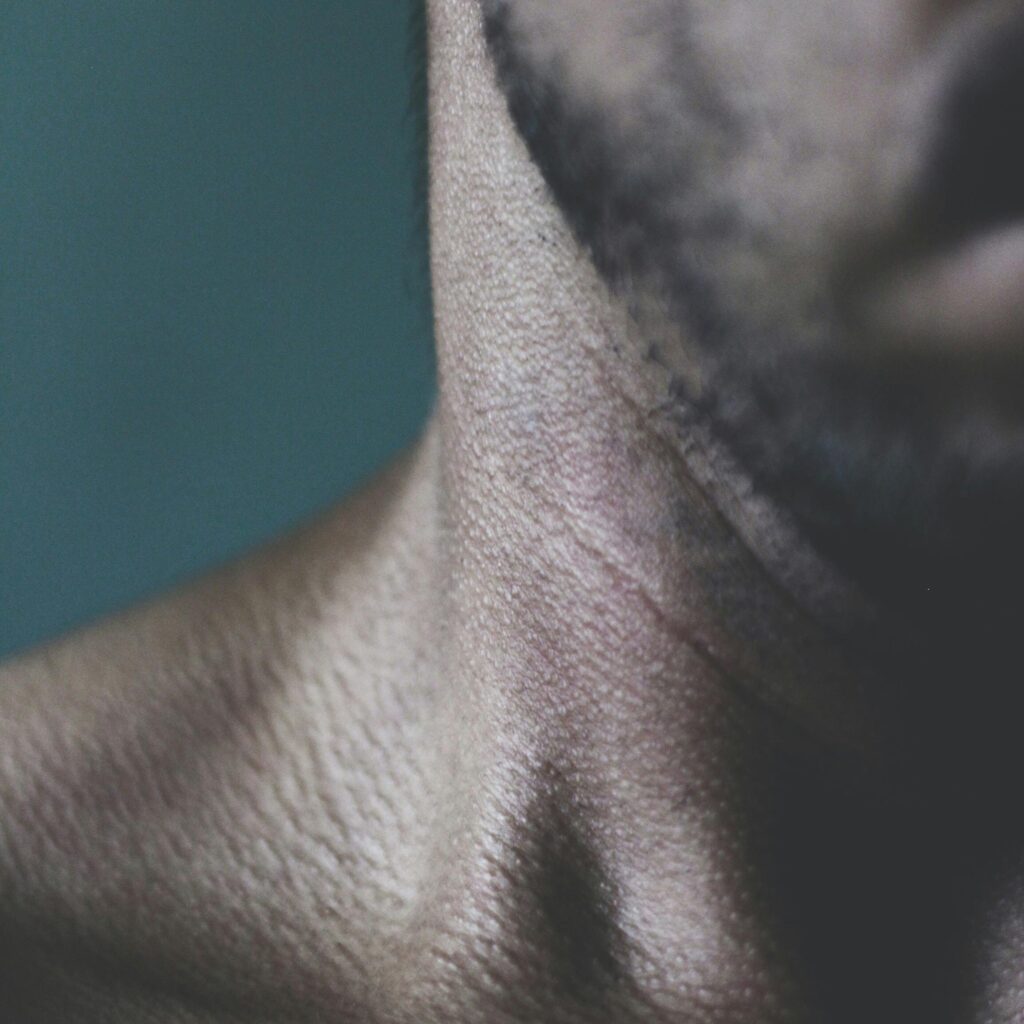Thyroid nodules
What is a thyroid nodule?
Since about 2018, I have been researching and learning more about thyroid nodules, as I came to discover that I had one growing on my left thyroid lobe. It was discovered following a regular wellness visit to my family physician, who had reviewed by family history and read that I listed a great grandparent as having goiter – so, I went to my first endocrinology appointment, and discovered that I had two nodules (at this time, one of them, a solid nodule on my left lobe, was maybe a few centimeters large in diameter, while the second was a small, fluid filled nodule on my right lobe). I was a little concerned, not knowing anything about nodules, or whether it meant that I had some underlying health issue I needed to be worried about. Four uncomfortable biopsies and just as many ultrasounds later, I’ve learned a few things about my particular nodules that I will be sharing for informational purposes only. (Please note, I am not an expert in the medical field, so do not read this if you are in search of medical advice – please call your doctor for that).

Don’t freak out.
According to Johns Hopkins, thyroid nodules are very common, especially in the United States. Most people who have nodules don’t even realize they exist, as they range in all different shapes and sizes. Having a nodule or several nodules does not mean that you have thyroid cancer. However, you should always check with your doctor and endocrinologist to have your thyroid checked out, especially if you have a family history of cancer or thyroid issues. Johns Hopkins also notes that more than 95% of nodules are benign – which means they are not cancerous. Remember that worrying about your nodule will not make it go away – but educating yourself about it will help with your worries and angst.

Nodules come in all different shapes and sizes.
You might have a single nodule on one side of your thyroid, or maybe you have several. Some are fluid filled, some are solid. According to the Mount Sinai website, some of the categories of nodules include:
- Thyroid adenomas (benign growths of thyroid tissue)
- Toxic adenomas (adenomas that secrete excess thyroid hormone)
- Cysts (fluid filled and usually benign)
- Goiter (an enlargement of the thyroid gland that could be caused by Hashimoto’s Thyroiditis)
- Multinodular goiter (an enlarged thyroid gland containing multiple nodules)
- Thyroid cancer (when normal thyroid cells undergo genetic changes that cause them to grow abnormally).
Knowing your family history of thyroid diseases or issues is an important piece of information for you and your doctor – if you can ask family members about any history, this would be useful to share with your endocrinologist at your first appointment.

Simply having a nodule does not mean you have to have it removed.
So, you’ve gone to your first ultrasound and your scans showed that you have a benign nodule. What’s next?
Do you have issues swallowing or breathing? Do you often find your voice gets raspy after talking for a while? Does your nodule stick out of your neck and make you feel self conscious?
If not, and your nodules have been confirmed benign by your healthcare professionals, you probably don’t have to get it removed. Having surgery to remove part (partial thyroidectomy) or all of your thyroid (total thyroidectomy) is invasive, and means that you will need to be on thyroid hormone medication for the rest of your life as your body will no longer naturally produce thyroid hormone as it used to. There are risks with thyroidectomies as with any other type of surgery – so you will want to do your research and explore your options with your doctor to understand if surgery is necessary. There are other treatments becoming available such as Radiofrequency Ablation (RFA) – a treatment that uses radio waves to create heat that reduces the size of solid benign nodules. This treatment is not yet available everywhere as it is still relatively new, but is becoming more popular. The Save Your Thyroid Facebook group provides useful information and resources on where to find doctors that provide RFA.

Nodules can grow or shrink in size.
Some nodules will increase in size over time, others may not, and occasionally, nodules may shrink (even without intervention like RFA). According to the Mayo Clinic, most nodules are small and slow growing. Nodules that may be associated with cancer can grow rapidly. If your endocrinologist suspects after your ultrasound that the nodule appears suspicious or has grown in size significantly, they will order a biopsy, or Fine Needle Aspiration (FNA) of the nodule to retrieve tissue from it to have tested and to check for malignancies. This is a safe and effective method of testing the thyroid tissue. If you need to have a biopsy, your doctor will use a local numbing shot to dull the area of your neck where the needle will enter, and you will usually only feel mild pressure when they insert it to perform the tissue retrieval. Typically, the biopsy will be over within minutes.

What if my biopsy shows that I have thyroid cancer?
According to the American Cancer Society, most thyroid cancers can be cured, especially if they haven’t metastasized to distant areas of the body. Treatments for thyroid cancer include surgery, chemotherapy, radiation, hormone therapy, and radioiodine therapy (Cleveland Clinic). There are different types of thyroid cancer (in order from most common to least: papillary, follicular, medullary, and anaplastic). Because of the fact that most (around 80% of) thyroid cancers are papillary (slow growing, highly treatable, and rarely fatal), there is hope in receiving a thyroid cancer prognosis. It’s important not to jump to conclusions when going through the process of learning about your nodules – be patient, go through the ultrasounds and biopsies your doctor recommends, and be well informed when it comes time to make any decisions for yourself.
Hopefully, this article has helped you learn a bit about thyroid nodules and given you useful information and links to further educate yourself. Remember to always do your own research, listen to your body, and seek medial professional advice if you think something might feel off with your body.





